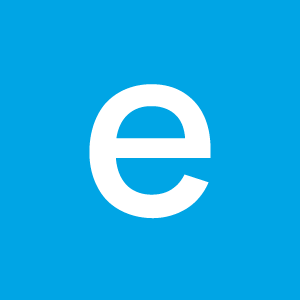Plan Digital Literacy Curriculum with ISTE, CSTA, and Core Standards
 Written By equip team
Written By equip team
Standards provide the foundational directions for the course of student learning by aligning curriculum, instruction, and assessment. Therefore, it is unsurprising that when it comes to teaching digital literacy, standards play a pivotal role in not only aligning instruction but also broadening the ways in which digital literacy and technology skills permeate core curriculum for technology-enabled teaching and learning.
Core Standards, ISTE Standards for Students, and CSTA Computer Science Standards provide a roadmap for an aligned and comprehensive digital literacy curriculum.
Common Core Standards
With technology touching almost all student learning, technology instruction is no longer siloed to computer class. And this integration into core curriculum is readily apparent in the Common Core Standards and its modified state-specific versions. The Common Core are college and career readiness standards created to provide consistent, comprehensive, and adequate learning goals across states.
Common Core Standards Structure
Common Core Standards are grade- and subject-specific standards that are knowledge- and skills-based, articulating both what students should ‘know’ and ‘do’ and provide strategies for targeting the standards in instruction
Common Core Standards cover ELA and math as well as literacy standards for history, social studies, science and other technical subjects. While Common Core and its variants do not specifically address technology skills, these skills are both explicitly and implicitly incorporated into the standards.
For example, this following fourth-grade writing benchmark explicitly outlines how students will use technology in honing their writing practice:
With some guidance and support from adults, use technology, including the Internet, to produce and publish writing as well as to interact and collaborate with others; demonstrate sufficient command of keyboarding skills to type a minimum of one page in a single sitting.
Comparatively, this fourth-grade writing standard implicitly includes technology because much of writing process now occurs on computers; so, to meet this benchmark, students will apply technology skills like using word processing and visual mapping tools.
Produce clear and coherent writing in which the development and organization are appropriate to task, purpose, and audience.
To summarize: Technology skills are deeply embedded within Core Standards and, therefore, inherently connected to core instruction.
ISTE Standards for Students
The International Society for Technology in Education (ISTE) Standards for Students provide the framework for developing higher-order digital literacy skills, which enable student-led learning that is technology-driven.
ISTE Standards, A Brief History
First published in 1998, the ISTE standards concentrated on fundamental computer skills and competencies in student learning such as knowing how to save a file, navigate a web interface, and use tools like floppy disks.
In 2007, the standards were adapted to instead cover using technology in the learning process like creating charts or graphs from data.
The latest iteration, the ISTE Standards for Students 2016, involves transforming student learning with technology and expanding learning from beyond the boundaries of the classroom. The newest standards encourage students to apply technology concepts and skills to evaluate a problem and create a solution, deepening learning in core concepts and sharpening their technology skills simultaneously.
ISTE Standards for Students Structure
The ISTE Standards are not delineated by grade or subject. Instead, they are intended to be broad digital literacy skills, rather than content knowledge, that are applicable throughout the course of the student learning experience.
The ISTE Standards’ framework cover the following skills:
- Empowered Learner – Students leverage technology to take an active role in choosing, achieving, and demonstrating competency in their learning goals, informed by the learning sciences.
- Digital Citizen – Students recognize the rights, responsibilities, and opportunities of living, learning, and working in an interconnected digital world, and they act and model in ways that are safe, legal, and ethical.
- Knowledge Constructor – Students critically curate a variety of resources using digital tools to construct knowledge, produce creative artifacts, and make meaningful learning experiences for themselves and others.
- Innovative Designer – Students use a variety of technologies within a design process to identify and solve problems by creating new, useful, or imaginative solutions.
- Computational Thinker – Students develop and employ strategies for understanding and solving problems in ways that leverage the power of technological methods to develop and test solutions.
- Creative Communicator – Students communicate clearly and express themselves creatively for a variety of purposes using the platforms, tools, styles, formats, and digital media appropriate to their goals.
- Global Collaborator – Students use digital tools to broaden their perspectives and enrich their learning by collaborating with others and working effectively in teams locally and globally.
Within the framework are performance standards focusing on what students can ‘do,’ but they are not prescriptive about how to meet the standards. For example, under ‘Empowered Learner’ are the following benchmarks:
- Students articulate and set personal learning goals, develop strategies leveraging technology to achieve them and reflect on the learning process itself to improve learning outcomes.
- Students build networks and customize their learning environments in ways that support the learning process.
To summarize: the ISTE Standards for Students intend to nurture students’ digital literacy skills throughout their time in school, positioning digital literacy as fundamental to the trajectory of student learning.
CSTA Computer Science Standards
Originally created in 2011 and revised in 2017, the Computer Science Teachers’ Association (CSTA) Computer Science Standards, which have been adopted by several states, focus on computer science and related technology skills that are integral for career readiness in the 21st century. The CSTA Computer Science Standards are designed to provide the foundation for a computer science curriculum, but they are often adapted to guide broader digital literacy curriculum and technology-driven core instruction.
CSTA Computer Science Standards for Students
The Computer Science Standards focus on developing computer science skills that are honed over time. The standards are organized by grade bands and address the following themes:
- Computing Systems
- Impacts of Computing
- Networks and the Internet
- Data and Analysis
- Algorithms and Programming
With grade bands, the complexity of the skills grows as students develop their computer science skills.
As an example, students in K-2 will learn to do the following under Computing Systems: Select and operate appropriate software to perform a variety of tasks and recognize that users have different needs and preferences for the technology they use.
In grades 3-5, this skill is broadened to: Describe how internal and external parts of computing devices function to form a system.
Similarly, for Data Analysis, students in K-2 will be able to: Collect and present the same data in various visual formats. And in grades 3-5, students will be able to: Organize and present collected data visually to highlight relationships and support a claim.
As a whole, the Computer Science Standards also develop a computational thinking mindset. Computational thinking uses decomposition, pattern recognition, abstraction, and algorithmic thinking to develop efficient and effective solutions.
To summarize: the CSTA Computer Science Standards help students acquire computer science skills that change how they use and understand technology, growing their computational mindset and propelling their readiness for college and career.
Whether covering broad digital literacy with the ISTE Standards for Students, targeted computer skills with CSTA Computer Science Standards, or technology skills embedded in Core Standards, these standards illustrate the various ways in which technology must be at the forefront of student learning. The Common Core, ISTE, and CSTA Standards provide the foundation for a holistic digital literacy curriculum by working symbiotically to cultivate students’ digital literacy.




